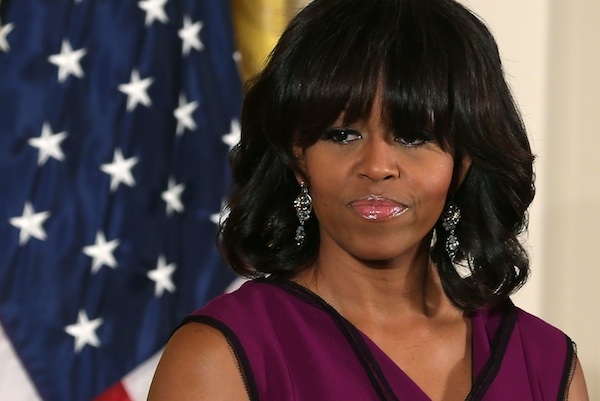Last week, Forbes published its annual list of the World’s Most Powerful Women. And while it lacks the sheer mesmeric vulgarity of the Rich List it does have a certain morbid fascination as an exercise in quantifying power. Forbes does provide an indication of how it carries out its rankings – candidates are rated on their news hits and TV appearances, their net worth or that of their countries or business and their ‘impact’ (the trickiest one to rate) – but there’s still an undeniably arbitrary aspect to it.
Melinda Gates, Michelle Obama, Hillary Clinton, Sheryl Sandberg (of Facebook) and Christine Lagarde are rated 3-7 in the list, in that order, but we’d be none the wiser if the order was juggled around. I mean, Melinda versus Michelle: it’s not like with like, is it, except to the extent that both of them exercise what power they have by virtue of their husbands. (In fact, anyone, like the President of Argentina, who got her position by virtue of her marriage, should, I’d say, be put in a separate ‘Wives’ category. Four power women, indeed, make it via husbands.) Is Sonia Gandhi (9) significantly more powerful than Beyoncé (17)? Does Anna Wintour (41) wield more influence than Lady Gaga (45)? Your guess is as good as mine.
But there’s a rather annoying separatist aspect to the whole thing which amounts to sexism. There isn’t, mark you, a separate Forbes Men’s List; what there is is a Forbes Most Powerful People List, which pretty well amounts to the same thing. It’s a bit like the Orange Prize; it seems rather patronising to give women, bless them, a list of their very own on the basis that they just wouldn’t hack it in a unisex roundup. And indeed women are in a notable minority in the general people’s list where Barack Obama appears way ahead of Michelle, and Bill ranks, rightly, above Melinda, admirable though she is.
On the whole, men run bigger companies, bigger countries, and amass bigger fortunes. There are, however, some cases like whether you rate Miuccia Prada against, say, Tom Ford, as an influence on fashion, where it’s just a matter of taste. Then there are the unusual categories such as the papacy for which women aren’t runners at all, though the late Mother Teresa undoubtedly gave the pope of the time a run for his ratings.
Which makes the perennial appearance of two of my own favourites – Angela Merkel (1) and the Queen (40) – so heartening. The Queen is head of a populous state and a national church and the owner of a substantial fortune, all of which she enjoys by virtue of her birth. But she also exercises enormous influence, simply because of how she plays her role and the respect she attracts by virtue of her sense of duty and sheer longevity. It is, I think, safe to assume that on the sorry day when she is replaced by Prince Charles, he will have her position but will not have her influence. Angela Merkel tops the women’s list and usually comes second in the world list, which is as it should be. She makes remarkably little play of her gender and that’s part of her appeal: she doesn’t need to be patronised with a place alongside other women.
Naturally the Forbes lists have the great merit of generating discussion and controversy and so they so serve their ultimate aim, to promote Forbes. But we shouldn’t have any delusions that this tumbling together of CEOs, presidents, editors and celebs has any more weight and objectivity than picking names out of a hat. All it does is remind us, rather painfully, of the extent to which men still run the show.







Comments